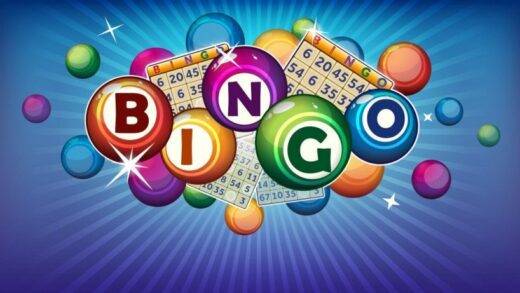In a world filled with digital distractions, parents and educators are always on the lookout for engaging ways to combine learning with play. Educational card games for kids strike that perfect balance.
Not only are they portable and easy to set up, but they also foster essential skills like reading, math, memory, and strategic thinking—all in a fun and relaxed setting.
From classroom favorites to quiet-time staples at home, the right learning card games can make education feel like an exciting challenge instead of a chore. Here’s a detailed look at the best options kids will actually look forward to playing.
Why Educational Card Games Work
Card games offer a hands-on, interactive way for children to absorb knowledge without the pressure of formal learning. Their simple, repetitive formats help reinforce concepts through play, making them ideal for skill-building across a wide range of ages.
Whether you’re trying to improve your child’s number fluency or expand their vocabulary, math and reading cards transform ordinary lessons into enjoyable games. They also support social development, teaching kids how to take turns, follow rules, and collaborate or compete respectfully.
Top Educational Card Games That Kids Love
1. Uno (with a Twist)
While Uno isn’t marketed as an educational game, parents and teachers can easily adapt it to reinforce number recognition, color matching, and basic math. For example, children can add the card values during each turn or use special cards as word prompts for storytelling.
2. Math War
This game puts a numerical twist on the classic card war. Each player flips a card and solves a math problem using the numbers shown. You can adjust it to focus on addition, subtraction, multiplication, or division based on age level. It’s an excellent way to build fast math recall in an exciting, competitive setting.
3. Zingo! Word Builder
Designed for early readers, this game combines the excitement of bingo with letter tiles to help children form three-letter words. It encourages phonics skills, spelling, and vocabulary development, making it a staple among reading card games for younger learners.
4. Sum Swamp Card Game
Based on the popular board game, this version emphasizes addition and subtraction with playful swamp-themed graphics. Perfect for ages 5 and up, it keeps math fun and interactive, even for kids who shy away from numbers.
5. Sleeping Queens
Created by a six-year-old, this whimsical game involves strategy, memory, and basic arithmetic. Kids must wake up queens by solving math equations and remembering card locations—making it a favorite for both imaginative play and academic reinforcement.
6. BrainBox Cards
Each BrainBox deck contains visual fact cards that cover subjects like science, geography, and history. Players study a card for 10 seconds and then answer a question based on memory. This format is excellent for boosting concentration, visual recall, and general knowledge.
7. Professor Noggin’s Trivia Cards
With themed decks on animals, space, and other topics, this series turns trivia into a two-level Q&A card game. Younger children can play with easier questions, while older siblings can tackle more challenging ones—perfect for mixed-age groups.
Benefits of Card Games for Learning
- Portability: Great for travel or downtime.
- Social Interaction: Teaches patience, turn-taking, and cooperation.
- Repetition Reinforcement: Repeated exposure to numbers or words boosts retention.
- Versatility: Most games can be adapted for difficulty or subject matter.
- Low-Tech Engagement: A welcome break from screens that still promotes learning.
Tips for Getting the Most from Learning Card Games
- Make it part of your routine: Play for 10–15 minutes daily to reinforce skills without fatigue.
- Let kids lead: Letting your child choose the game increases motivation.
- Mix it up: Alternate between math and reading-focused games to support well-rounded development.
- Create your own rules: Customize games to match your child’s learning needs or grade level.
Recommendation
Best Games to Improve Hand-Eye Coordination in Kids
Best Animal-Themed Games for Kids That Teach and Entertain
Offline Brain Games for 4–8 Year Olds That Sharpen Minds
10 Fun Indoor Games for 7-Year-Olds to Try at Home
FAQs
Q1: At what age can children start playing educational card games?
A1: Many games are designed for kids as young as 3 or 4. Start with color or number matching games, then introduce more complex games as their skills develop.
Q2: Are card games suitable for classroom learning?
A2: Yes! Card games are an excellent resource for small group stations, indoor recess, or tutoring sessions. They promote engagement and peer learning.
Q3: How can I tell if a card game is truly educational?
A3: Look for games that target specific skills like phonics, math facts, or memory. Read product descriptions and reviews to assess educational value.
Q4: What are some DIY card game ideas?
A4: You can create flashcard-style games using index cards. For example, write math problems on one side and answers on the other, or create sight word match-ups.
Q5: Can these games be used for homeschooling?
A5: Absolutely. Educational card games make great supplemental tools for homeschooling, offering both structured learning and spontaneous, fun review sessions.
Conclusion
Educational card games for kids blend fun and learning in a way few other tools can.
Whether you’re helping your child improve math fluency or supporting early reading skills, these games provide an accessible and enjoyable path to progress.
With so many options out there, you’re sure to find a few that your child will love—and keep asking to play again and again.



